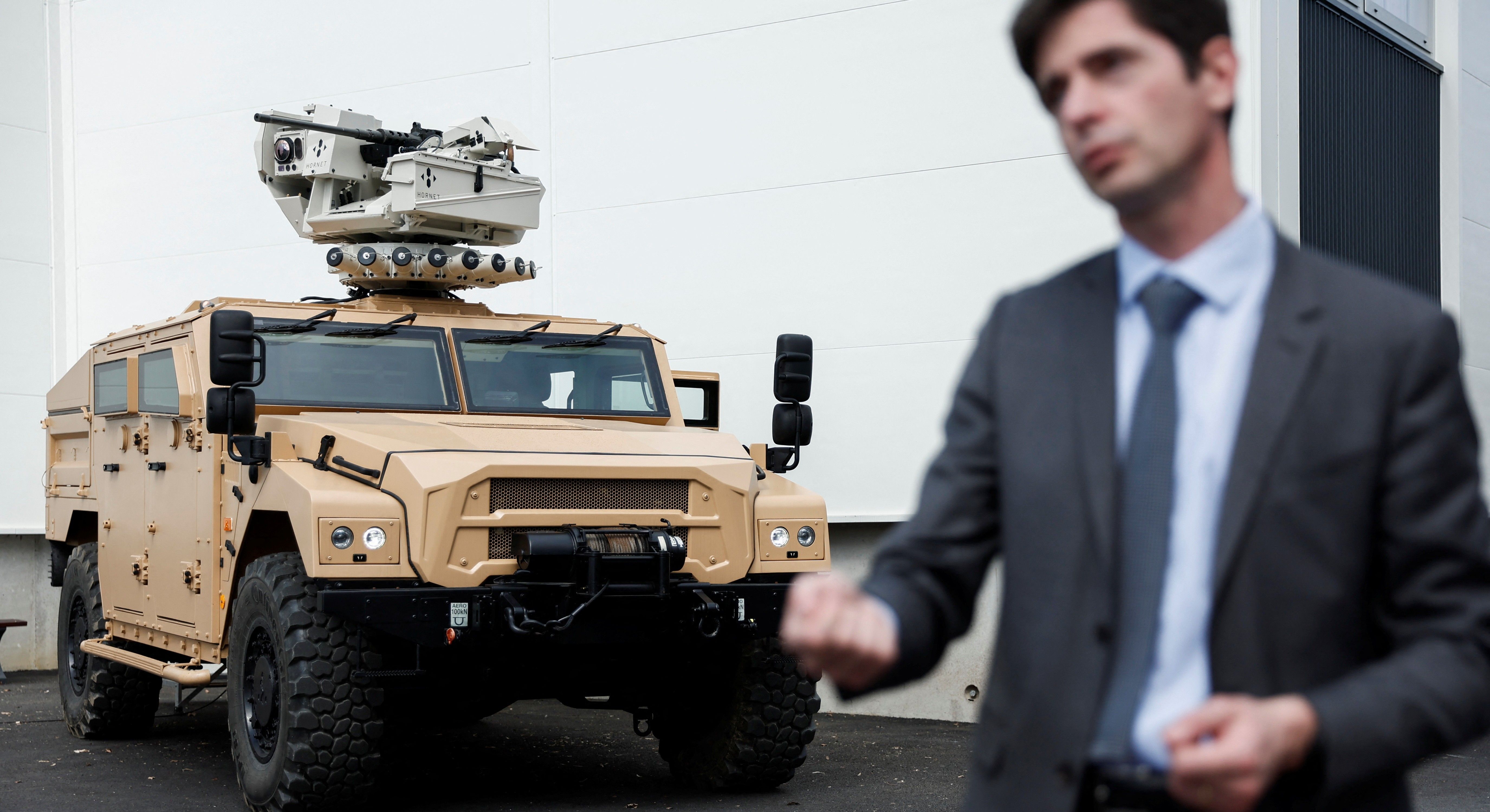Western weapon makers are preparing to set up shop in Ukraine, raising questions about how the U.S. government will guide industry efforts to establish weapon manufacturing capacity there. It’s imperative the government weigh in sooner than later, given that U.S. contractors have already made commitments to jointly produce weapons with Ukraine.
Last month, 252 companies from over 30 countries convened in Kyiv for the International Forum of Defense Industries. Ukrainian President Volodymyr Zelensky announced the creation of a new Defense Industries Alliance with the goal of protecting Ukraine and “any nation in the world from aggression.” The alliance will help Ukraine localize weapon production for its fight against Russia.
At least 59 companies from 23 countries — including France, Britain, Germany, and Sweden — have joined the alliance so far. According to Ukrainian Foreign Affairs Minister Dmytro Kuleba, this means contractors have made “concrete commitments to create necessary weapons” in partnership with Ukrainian defense companies.
There are scant details about U.S. companies joining, but the wheels seem to be in motion — only a week before the forum, three U.S. defense industry associations reportedly signed cooperation agreements with the Ukrainian government, involving over 2,000 U.S. military contractors in future potential co-production efforts.
Boosting weapon production in Ukraine will undoubtably strengthen the military’s ability to fight Russian aggression while easing pressure on Western production lines — a particularly appealing prospect to the United States now that it is supporting two ongoing wars. But the Pentagon can’t leave it to military contractors to figure out the mechanics of joint production.
Military contractors consistently lobby for more national security spending. Meanwhile, contractors price gouge the Pentagon and downplay their financial health to stuff the pockets of shareholders. They cannot be trusted to carry the torch into what appears to be the next chapter of U.S. support for Ukraine: industrial collaboration. The Pentagon must guide co-production efforts by clarifying relevant policy on military technology transfers and production overseas, as well as coordinating with industry to ensure co-production efforts are efficient and cost-effective.
The Pentagon has been openly encouraging “friend-shoring,” or “co-development, co-production and co-sustainment” with partners to expedite weapon production and ease the strain on the U.S. industrial base. The Wall Street Journal has reported that the department is even “relaxing rules” to share military technology with and authorize production by manufacturers in allied nations like Poland and Germany. The key question is how, and whether, such relaxed rules apply to a country at war.
The Pentagon will likely facilitate the lion’s share of joint ventures with Ukrainian manufacturers, but the State and Commerce departments could be involved if such ventures included the transfer of certain weapons or technology. The Commerce Department is notably lacking in transparency when it comes to reporting exports of certain small arms, including various firearms, artillery, and ammunition (which Ukraine currently desperately needs). So the logistics of joint production also directly impact the level of transparency around the U.S. defense industry’s investments within Ukraine — the security implications of which warrant further exploration.
Since the war in Ukraine began, most U.S. security assistance to the country has flowed from well-documented supplemental spending packages. Logistically, the Defense and State departments have channeled aid through presidential drawdowns, the Ukraine Security Assistance Initiative, and the Foreign Military Financing program. Presidential drawdowns comprise the majority of this aid, with the secretary of state — in coordination with the Department of Defense — so far facilitating 44 drawdowns from Pentagon stockpiles to transfer arms to Ukraine.
The administration has consistently detailed both the scope and nature of this military assistance to Ukraine since Russia’s invasion, a welcome reprieve from an otherwise discouraging trend in arms trade transparency. But House Republicans are increasingly hostile toward more security assistance for the country, and public support is declining. For that reason, the Biden administration’s latest request for supplemental Ukraine aid may be the last until the 2024 elections.
Still, President Biden has stated that the United States will support Ukraine “for as long as it takes,” committing to “bolstering Ukraine’s defensive capabilities in the long term, including through partnerships with Ukraine’s defense industrial base.” In September, Biden announced that the U.S. government will soon host a conference to convene defense, business, and government leaders from the United States and Ukraine to “explore options for joint ventures and co-production.”
These partnerships could very well become a significant channel for U.S. support to Ukraine as both political will for arms transfers and Pentagon stockpiles dwindle. As the Pentagon prepares its upcoming (and first) National Defense Industrial Strategy, it should prioritize shaping the parameters and guardrails for joint production to ensure that it’s maximally effective in aiding Ukraine and protecting the Pentagon from potential contractor malfeasance.
















